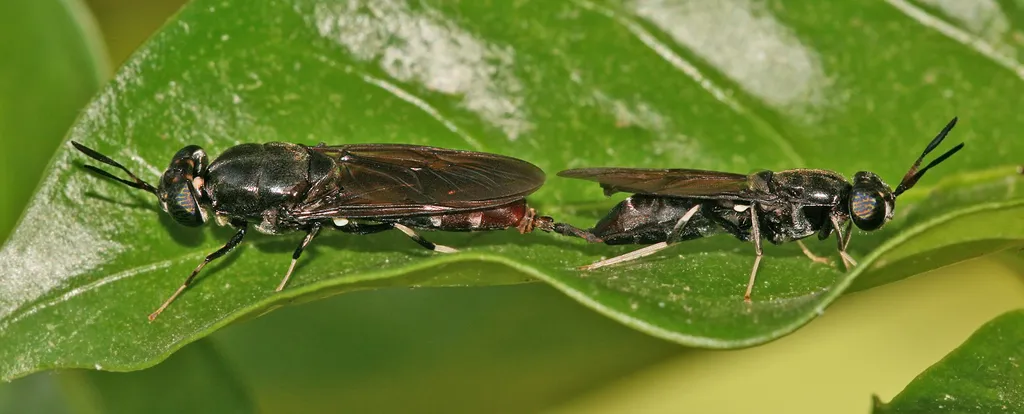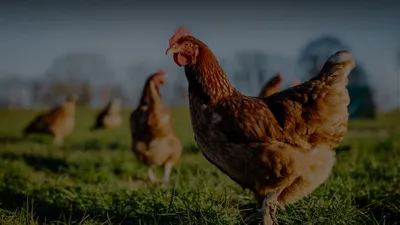Black Soldier Fly (BSF) larvae, known scientifically as Hermetia illucens, are gaining attention for their impressive nutritional content and potential as a sustainable protein source. These larvae thrive on various organic waste materials, making them an eco-friendly option for food waste management and a promising alternative in animal feed and human nutrition. This article explores the nutritional profile of BSF larvae, focusing on their macro and micronutrient content, health benefits, and applications.
Health benefits
1. Sustainable protein source: The high protein content and balanced amino acid profile make BSF larvae an excellent alternative to traditional protein sources. They can be produced on organic waste, reducing the environmental impact of protein production and providing a sustainable solution for future food security.
2. Antimicrobial properties: Lauric acid and other medium-chain fatty acids in BSF larvae offer antimicrobial benefits, which can help reduce pathogens in animal feed and potentially improve gut health in humans and animals.
3. Rich in essential nutrients: BSF larvae provide a comprehensive range of essential nutrients, making them a potential superfood. Their vitamin and mineral content can help address nutritional deficiencies, particularly in regions where conventional nutrient sources are scarce or expensive.
Macronutrients
1. Protein: BSF larvae are notable for their high protein content, which ranges from 35% to 45% of their dry weight. This protein is highly digestible, making it valuable for animal feed. The amino acid profile is well-balanced, containing all essential amino acids needed by both animals and humans, comparable to traditional protein sources like fishmeal and soybean meal.
2. Fats: The fat content in BSF larvae varies between 15% to 35% of their dry weight, depending on diet and developmental stage. These fats include beneficial fatty acids like lauric acid, which has antimicrobial properties, and other medium-chain fatty acids that provide quick energy. The lipid profile also includes unsaturated fats like oleic acid, beneficial for heart health.
3. Carbohydrates: BSF larvae have a low carbohydrate content, typically around 5% to 10% of their dry weight. The primary carbohydrate is chitin, found in the exoskeletons of insects, which can contribute to gut health by acting as a prebiotic.
Micronutrients
1. Vitamins: BSF larvae are rich in various vitamins, including B-complex vitamins (B1, B2, B5, B6, B7, and B12), vitamin A, and vitamin D. These vitamins are crucial for metabolic processes, immune function, and overall health maintenance.
2. Minerals: The mineral content in BSF larvae is significant, with substantial amounts of calcium, phosphorus, magnesium, potassium, and zinc. Calcium and phosphorus are vital for bone health, while magnesium and potassium are essential for muscle function and cardiovascular health. Zinc is crucial for immune function and enzymatic processes.
3. Trace Elements: BSF larvae also provide essential trace elements such as iron, manganese, and copper. Iron is critical for oxygen transport in the blood, manganese is necessary for bone formation and metabolic processes, and copper is involved in red blood cell production and immune system function.
Applications
1. Animal feed: BSF larvae are increasingly used in aquaculture, poultry, and swine industries as a sustainable and nutrient-rich feed ingredient. They have been shown to improve growth rates, feed conversion ratios, and overall health of livestock.
2. Human nutrition: While still a novel concept in many cultures, BSF larvae are gaining popularity as a protein supplement in human diets. They can be processed into protein powders, energy bars, and other health food products.
3. Waste management: The larvae’s ability to consume and convert organic waste into high-value biomass makes them an integral part of sustainable waste management systems. They help reduce waste volume, lower greenhouse gas emissions, and produce valuable compost and insect frass as a byproduct.
4. Cosmetic and pharmaceutical industries: The lipids and chitin extracted from BSF larvae are used in the cosmetic industry for skincare products and in pharmaceuticals for their potential health benefits, including antimicrobial and anti-inflammatory properties.
The nutritional profile of Black Soldier Fly larvae highlights their potential as a sustainable and nutritious food source. Their high protein content, beneficial fats, essential vitamins, and minerals make them suitable for various applications in animal feed, human nutrition, waste management, and even the cosmetic and pharmaceutical industries. As the demand for sustainable protein sources grows, BSF larvae present a promising solution to global food security challenges, offering an eco-friendly alternative to traditional protein sources while contributing to waste reduction and environmental conservation.
.jpg)



